Is Austin’s hot housing market flipping in favor of buyers?
The frenzied homebuying days in Austin, Texas, that saw some buyers offer six figures over asking price are gone.
The Texas capital, where the average home price soared by $170,000 during the COVID pandemic, is now seeing major price corrections: The median price per square foot is down 9.5% from its pandemic peak two years ago, according to Realtor.com. As of April, the median list price stood at $557,000.
Austin’s real estate boom was driven by a sudden influx of workers, who were newly remote and suddenly more mobile thanks to early COVID office closures. They encountered a waning supply of inventory, and home prices subsequently spiked, dealing a blow to the city’s affordability.
However, as mortgage rates increase, new construction finally enters the market, and out-of-towners begin to leave, Austin’s housing boom appears to be winding down.
“We mirrored what happened across the country: We saw a lot of demand, which drove up prices really quickly,” Kent Redding, president of the Austin Board of Realtors, told Yahoo Finance. “But that [housing boom] was outside the norm. It was a blip on the map.”
Read more: Mortgage rates top 7% — is this a good time to buy a house
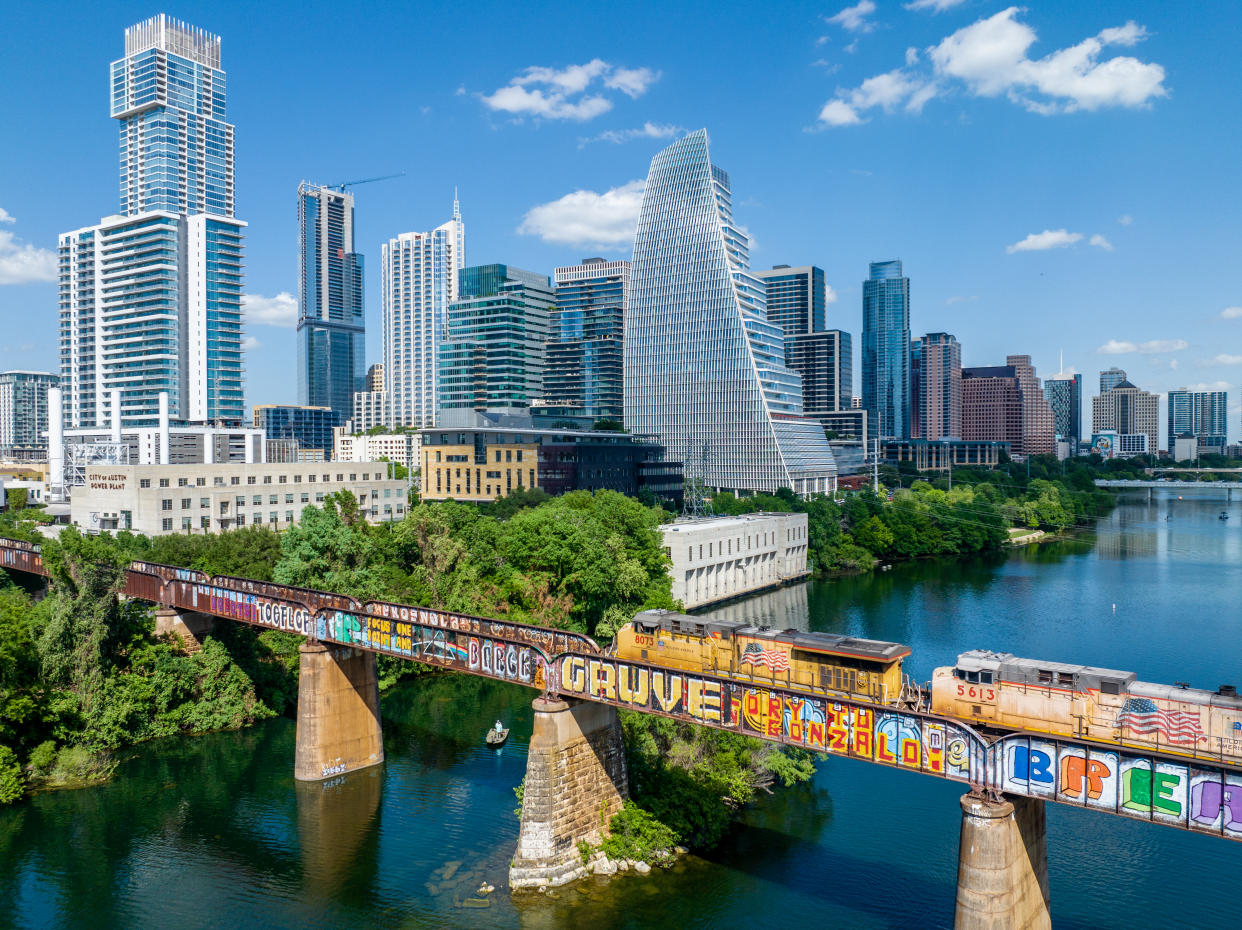
'No inventory for two years'
Home prices in Austin soared during the pandemic as out-of-town remote workers and tech employees decided to trade in coastal cities for more space, affordability, and, in some cases, tax perks.
For many newcomers, the quickly expanding Texas tech hub — now home to giants like Google, Tesla, Amazon, and Apple — was a cost-effective move, especially given Texas is a no-income-tax state.
“The market reached an absolute peak in 2022,” Andrew Vallejo, Redfin agent based in Austin, told Yahoo Finance. “Prices were climbing pretty rapidly.”
According to population estimates from the US Census Bureau, the Austin metro population added nearly 140,000 new residents from 2020 to 2022. Between July 2022 and July 2023, Austin’s metro area added just over 50,000 residents.
That rapid influx of newcomers shocked the market’s inventory.
At one point, the active listing count for all residential single-family homes, condominiums, or townhomes fell just over 64% from May 2020 to February 2022, according to Unlock MLS.
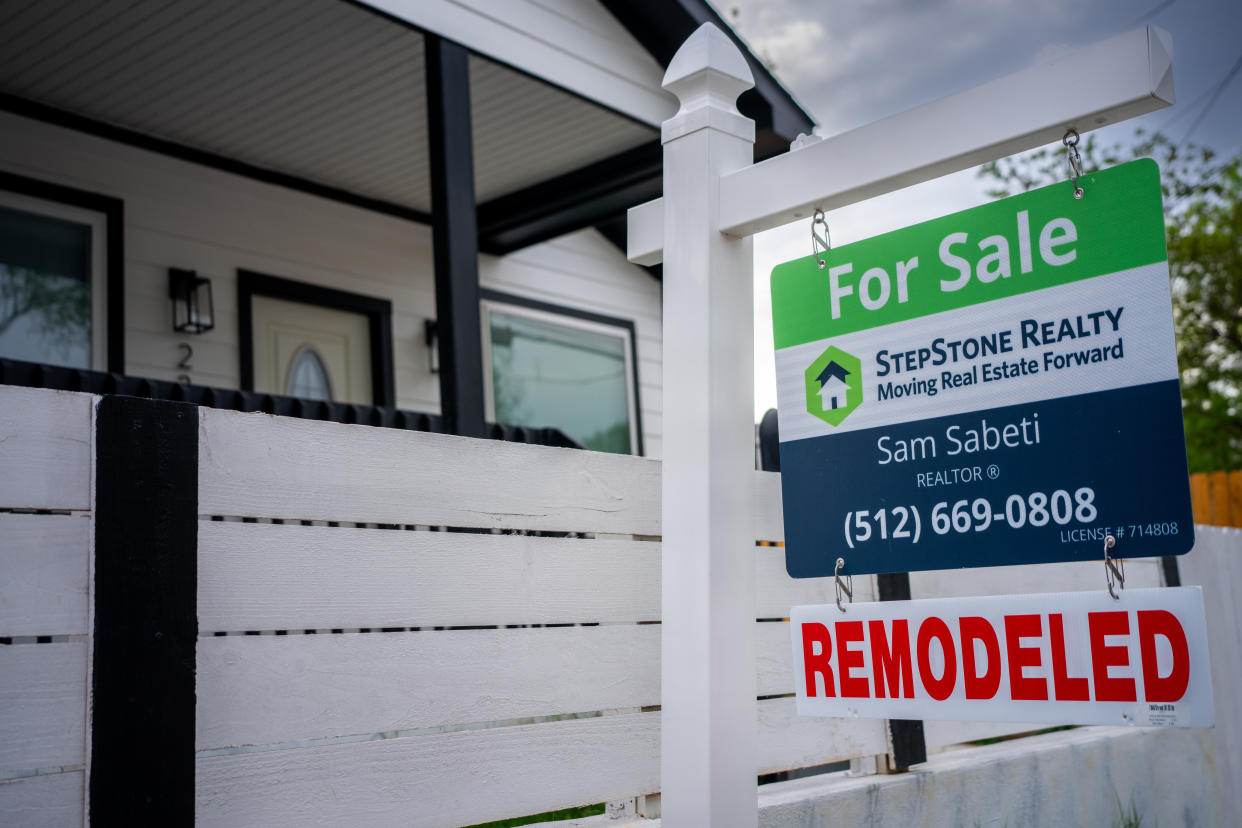
Previously owned homes grew limited as homeowners set their sights on refinancing at ultra-low rates during the pandemic. Meanwhile, the few listings available drew fierce competition, multiple bids, and buyers purchasing well over the asking price.
“It was almost a given that you would be paying over ask, and the question was how much,” Stephanie Douglass, co-founder at Open House Austin, told Yahoo Finance. “We saw offers on homes as high as six figures over-ask, and anywhere from five to 25 offers on almost every house.”
While new construction bridged some of the inventory gap, it wasn’t enough to assuage demand. According to Austin’s city demographer, the average home price jumped from $420,000 in 2020 to $590,000 in 2022 as demand outpaced inventory.
“There was just no inventory for two years,” said Jeremy Knight, real estate agent and founder of The Knight Group in Austin. “Now all of that inventory is finally catching up.”
According to the Realtors board, the market is currently at 3.8 months of inventory. While five to six months is a balanced market nationally, four to five months is enough to feel balanced in this metro area, the Realtors group says.
Read more: Buying a new construction home: Pros, cons, and how to finance it
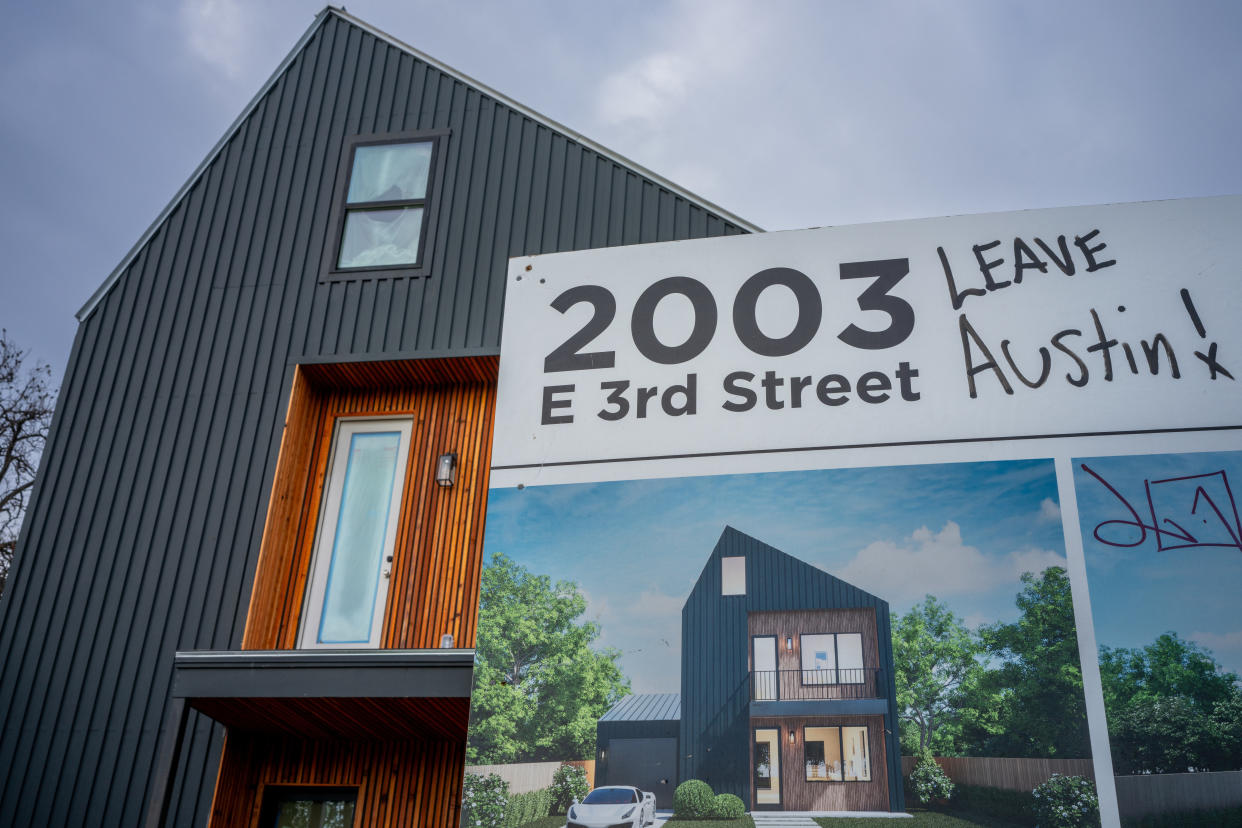
New construction, people moving due to circumstantial life events, in addition to some folks returning to coastal cities have also freed up inventory over the past year, said Knight.
One county in the Austin metropolitan area is already registering a shift, census data shows. Travis County — which encompasses downtown and central Austin — had negative net migration between 2022 and 2023.
“More people moved out of the county than into it,” Dr. Lila Valencia, Austin’s city demographer, told Yahoo Finance.
Between July 2022 and July 2023, Travis County had 2,411 more residents move out than move in, according to Census Bureau data. The data only looks at net migration figures and does not include details on people's origin or destination.
“I cannot say whether there is a migration flow from Austin to coastal cities,” Valencia noted.
Still, real estate professionals have a strong inkling that some of the flow is people returning to where they came from.
“There was a big shift to move to Texas from more expensive cities due to work-from-home, but now people realize they may not need as much space after all. Back then, people were at home 90% of the time, and so they wanted those big houses and big backyards in Texas,” said Douglass. “So we’re seeing not this mass exodus, but a leveling out of the population growth.”
According to Realtor.com, housing inventory surpassed pre-pandemic levels by nearly 30% in April. That’s ushered in a big price correction in some parts of Austin, bringing prices slightly closer to earth.
As of April, the median list price was $557,000, down 2% year over year. Still, the median listing price per square foot was up 1% from a year ago, according to Realtor.com. The required income to purchase a median-priced home was $157,000 annually.
“It’s really not a new normal, it’s just a normal,” said Redding. “There was normal in 2019 and before. We had a steady appreciation, then boom, prices went way up, and now we’re coming back down to what was normal. For the past year, prices have been pretty steady.”
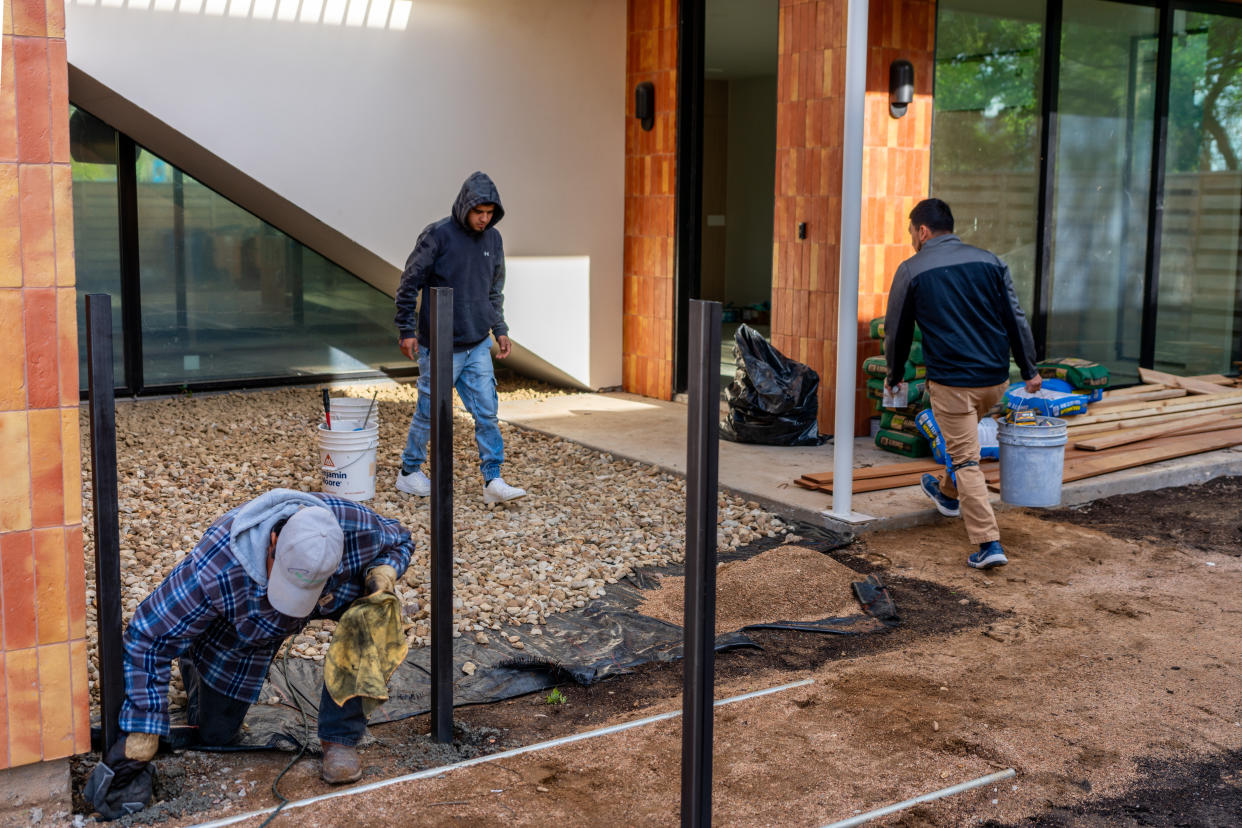
'Home prices claw back'
Where home prices correct the most really depends on where you’re shopping for a home.
“I’ve seen home prices claw back to pre-pandemic 2019 prices in a lot of areas,” Vallejo said. “The suburbs are very significantly affected.”
For instance, just 15 miles north of Austin, Round Rock saw average listing prices climb to a peak of $497,000 in 2022, falling to $399,000 in February. Despite that softening, they remain above the 2020 median listing price point of $259,500.
At the same time, there are still a few hotspots seeing multiple bids.
“We still have pockets of multiple offers and neighborhoods that have retained their value well,” Redding said, noting that areas close to downtown often see more demand.
“Right now, I have a buyer that’s running an offer against three others on a million-dollar property,” Knight told Yahoo Finance.
But in most neighborhoods, the chances of getting multiple bids on a home or even expecting someone to offer over the asking price can be hard to come by.
Vallejo said he put up eight homes for sale in the last two weeks, but only three received offers the first weekend. Two or three potential buyers visited, and only one made a good offer on each.
“Then the others where there was no traffic at all,” Vallejo said. “And they're all priced competitively to market, so it's very much hit or miss where if you find the perfect buyer that happens to like your home, that could be great. But also, we could end up sitting for 45 or 60 days and have to have a price adjustment.”
“It’s unpredictable,” he added.
It’s a buyers' market… just not on paper
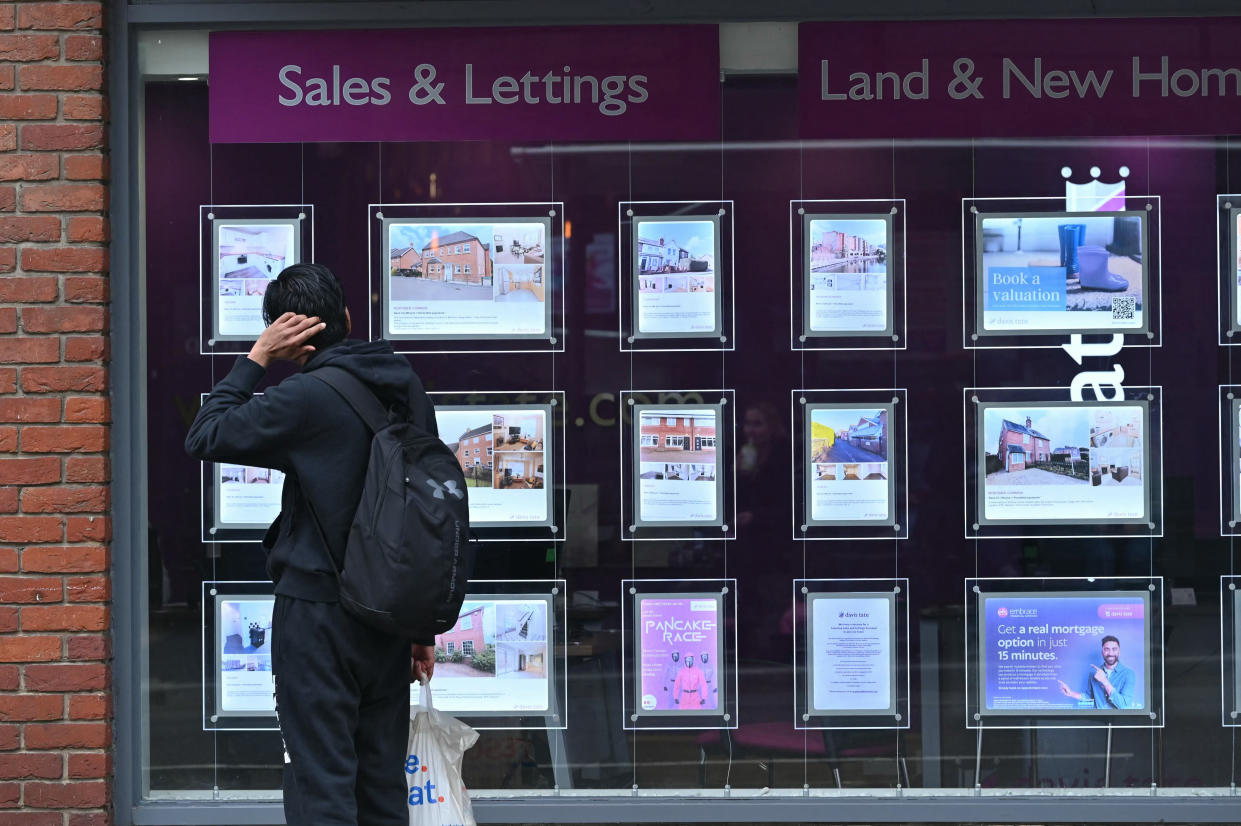
Real estate professionals on the ground in Austin agree the market has changed a lot.
“Before, you would go to a house that was just listed and would see 10 people outside waiting to show it, and you would know that you would have to put in an offer 10 to 48 hours after viewing it because it would be off the market in two to three days,” Douglass said.
That’s not the case today. The days of buyers waiving appraisals and rushing to bid over-ask are fading in the rearview mirror.
Nationwide, the typical home spent 47 days on the market in April, Realtor.com found. In Austin, some real estate agents are seeing homes stay up to two months on the market if they aren’t priced right.
Across the US, the share of homes with a price reduction increased to 15.5% in April, from 12.3% a year ago.
“While it may not be a buyers' market on paper just because the inventory is not there yet, buyers are severely slowing down,” Douglass said. “Not only are you seeing sellers keeping the contingencies in place but giving seller concessions in the form of closing costs, giving repairs that they never would have done during the pandemic.”
Gabriella Cruz-Martinez is a personal finance and housing reporter at Yahoo Finance. Follow her on X @__gabriellacruz.
